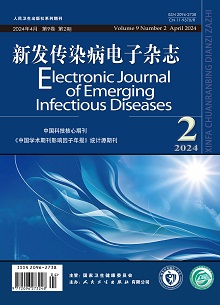LAG-3 Role in Infection
引用次数: 1
Abstract
: Lymphocyte activation gene 3 (LAG-3) is a cell surface inhibitory receptor with multiple biological activities over T cell activation and effector functions. LAG-3 plays a regulatory role in immunity and emerged some time ago as an inhibitory immune checkpoint molecule. A systematic research was performed using the PubMed and ClinicalTrial.gov databases. Articles published up to 2021 meeting the inclusion criteria were investigated. LAG-3 expression has been linked to in-creased pathology in certain infections, such as the ones caused by Salmonella, Plasmodium para-sites, Mycobacterium tuberculosis, human immunodeficiency virus (HIV), non-pathogenic simian immunodeficiency virus (SIV), in hepatitis B virus (HBV), human papillomavirus (HPV), chronic hepatitis C virus (HCV), lymphocytic choriomeningitis virus (LCMV) and herpes simplex virus 1 (HSV-1). Here, we will discuss the impaired control of cell-mediated immunity associated with high accumulation of LAG-3 after infection, in most cases associated with a high bacterial/viral load, a reduced survival rate or persisting metabolic and inflammation disorders. Interestingly, the in vitro blockade of PD-1/LAG-3 interactions enhanced cytokine production in response to some of these infections.LAG-3在感染中的作用
淋巴细胞活化基因3 (LAG-3)是一种细胞表面抑制受体,对T细胞活化和效应具有多种生物活性。LAG-3在免疫过程中起调节作用,近年来作为抑制免疫检查点分子出现。使用PubMed和ClinicalTrial.gov数据库进行系统研究。研究了2021年之前发表的符合纳入标准的文章。LAG-3的表达与某些感染的病理增加有关,例如由沙门氏菌、副疟原虫、结核分枝杆菌、人类免疫缺陷病毒(HIV)、非致病性猴免疫缺陷病毒(SIV)、乙型肝炎病毒(HBV)、人乳头瘤病毒(HPV)、慢性丙型肝炎病毒(HCV)、淋巴细胞脉络丛脑膜炎病毒(LCMV)和单纯疱疹病毒1 (HSV-1)引起的感染。在这里,我们将讨论感染后与LAG-3高积累相关的细胞介导免疫控制受损,在大多数情况下与高细菌/病毒载量、存活率降低或持续的代谢和炎症紊乱有关。有趣的是,体外阻断PD-1/LAG-3相互作用可增强对某些感染的细胞因子产生。
本文章由计算机程序翻译,如有差异,请以英文原文为准。
求助全文
约1分钟内获得全文
求助全文
来源期刊
自引率
0.00%
发文量
402
期刊介绍:
Founded in November 2016, Electronic Journal of Emerging Infectious Diseases is not only the first national academic journal in the field of emerging infectious diseases in China, but also an internationaljournal available to researchers worldwide and dedicated to publish novel, hypothesis-driven and high-impact original research across the entire spectrum of the field of infectious diseases. The aim of this journal is to prompt and popularize the state-of-the-art advancements concerning the prevention, diagnosis, and treatment of infectious diseases to medical practitioners and researchers, and thus improve public practice in prevention and control of infectious diseases worldwide.

 求助内容:
求助内容: 应助结果提醒方式:
应助结果提醒方式:


